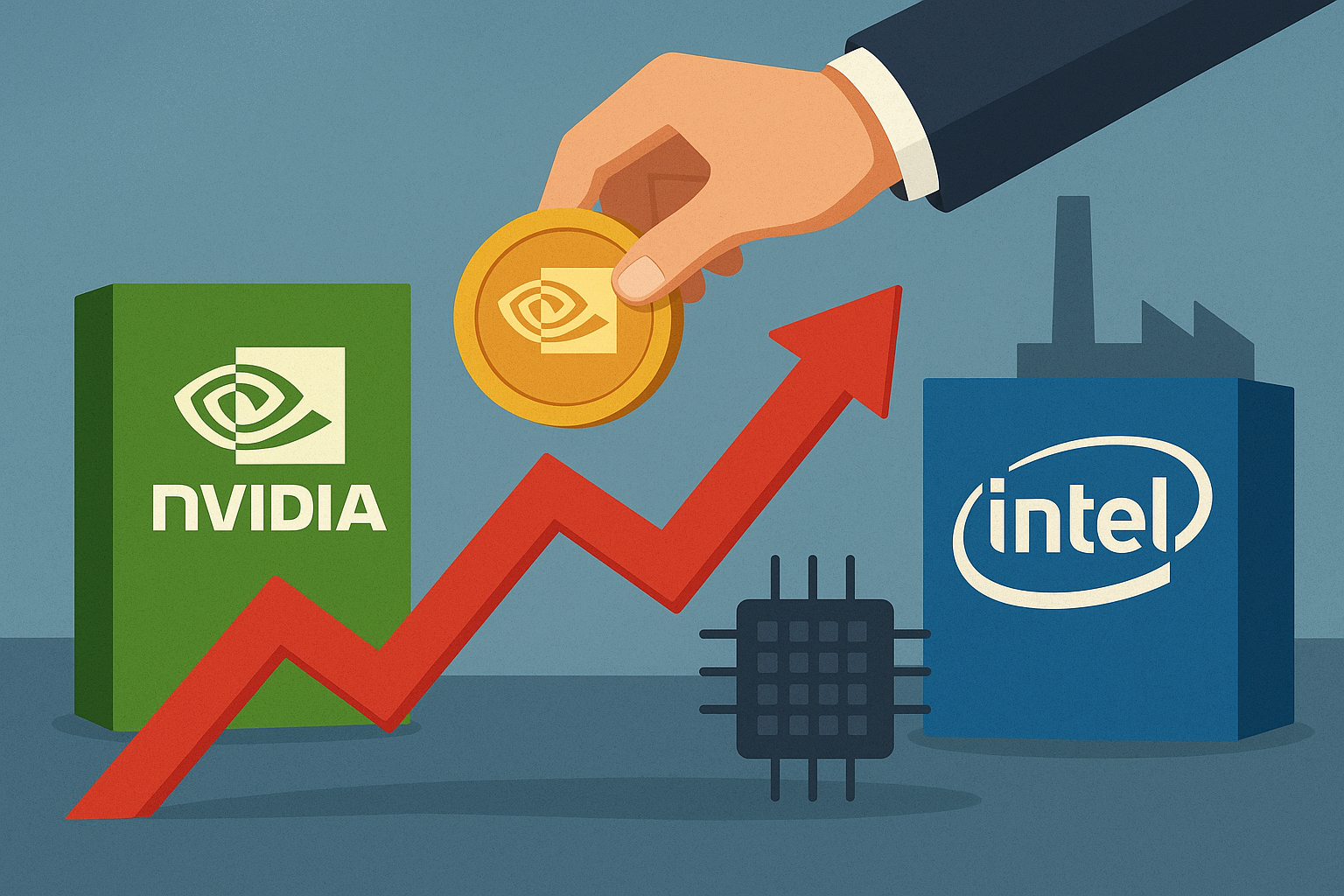The global semiconductor race has just taken an unexpected turn. Nvidia, the world’s most valuable chipmaker and leader in artificial intelligence GPUs, has announced a $5 billion equity stake in Intel. The move, first reported by MarketWatch, is more than a financial injection; it signals a strategic bet on rebuilding America’s chipmaking backbone and creating tighter alignment between GPU design and foundry capacity.
For investors, this partnership underscores how the AI boom is reshaping not just software innovation but the very foundations of hardware manufacturing and supply chains.
A Strategic Bet on Foundry Capacity
Intel has struggled for years to regain leadership in manufacturing, ceding ground to Taiwan’s TSMC ($TSM) and South Korea’s Samsung. But with demand for AI compute exploding, Nvidia’s backing provides both credibility and capital to Intel’s turnaround strategy.
Nvidia dominates the GPU market, but its reliance on TSMC has created vulnerabilities in an era of escalating U.S.–China tensions. By aligning with Intel’s foundry ambitions, Nvidia may be seeking both supply chain diversification and greater geopolitical security.
As Bloomberg analysts note, “the investment is as much about securing long-term capacity as it is about reshaping the competitive landscape in semiconductors.” If successful, the partnership could tilt balance away from Asia-dominated manufacturing and back toward U.S. soil.
Why This Matters for Investors
1. The AI CapEx Surge Is Reshaping Priorities
Spending on AI infrastructure is reaching unprecedented levels. According to WSJ, global tech firms have already committed more than $300 billion to AI-related data centers and hardware in 2025. Nvidia’s investment signals that chip independence and capacity security are now just as important as raw performance.
2. Foundries May Be the Next Growth Frontier
While GPUs and AI software have been the market darlings, manufacturing capacity has often been overlooked. If Nvidia helps Intel accelerate foundry development, investors could see renewed momentum in once-beleaguered names such as Intel ($INTC) and GlobalFoundries ($GFS).
3. A Potential Shift in Competitive Dynamics
This partnership may also reshape the balance of power. Nvidia gains access to a domestic foundry partner, while Intel benefits from association with the most influential player in AI. The long-term impact could put pressure on AMD ($AMD), which also competes in GPUs but lacks similar strategic alliances in manufacturing.
Future Trends to Watch
Geopolitical Realignment
With Washington prioritizing semiconductor independence through the CHIPS Act, Nvidia’s move aligns with U.S. government objectives. Investors should watch for additional incentives or partnerships that accelerate domestic foundry development.
AI Infrastructure Saturation
The industry risks overcapacity if demand fails to keep pace with massive investment. Still, Nvidia’s capital infusion suggests confidence that the AI compute boom has years of runway left.
M&A and Strategic Stakes
This may spark a wave of strategic alliances in semiconductors, as companies pair design leadership with manufacturing capacity. Expect potential deals across chip design, fabs, and AI hardware ecosystems.
Key Investment Insight
Investors should reassess the semiconductor landscape beyond the obvious GPU winners. Nvidia remains dominant, but its $5 billion bet highlights Intel as a potentially undervalued turnaround story with strategic relevance. Foundry players, long considered laggards, may now be entering a period of renewed importance as the global race for chip independence accelerates.
A diversified approach — combining exposure to GPU leaders, foundry operators, and critical materials suppliers — could help investors capture upside from this new phase of the AI infrastructure race.
The semiconductor industry is no longer just about speed and performance. It’s about independence, security, and strategic alignment. Nvidia’s stake in Intel marks a pivotal moment in that evolution — and investors would be wise to track the ripple effects closely.
Stay with MoneyNews.Today for daily insights on market shifts, from chip wars to AI megatrends, helping you cut through the noise and make informed investment decisions.





